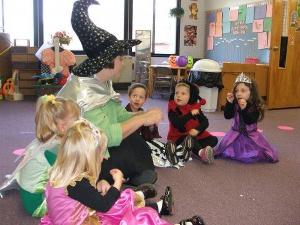It is unlikely that there is at least one person who does not like fairy tales. Mother’s gentle voice, beautiful descriptions of nature, vivid characters and, of course, good that always defeats evil — we remember all this with love and warmth in our hearts when it comes to this genre of oral folk art. And today they talk about fairy-tale therapy all the time. What it is? Why is this needed and how to use this method?
Fairytale therapy is a special direction, a method in practical psychology, which has been successfully used in
kindergartens. And it’s worth it for parents to learn about how to effectively develop a child’s speech, expand his consciousness, improve interaction through communication with the outside world. Fairy-tale therapy for preschoolers is simply irreplaceable, because mostly domestic vocabulary prevails between parents and children. This does not allow the child to expand his vocabulary; the absence of comparisons, epithets, figurative expressions simplifies speech, makes it boring and unexpressive. It is in such situations that fairy-tale therapy for preschoolers is designed to fill in the gaps, to give the child those wonderful speech patterns that will enable them to master their mother tongue more successfully and faster.
Psychologists distinguish three functions of fairy tales: diagnostic, corrective (therapeutic) and prognostic. The first of them helps to identify those child behavior strategies and life scenarios that are already in his subconscious. Obtaining such information is very simple. The specialist asks the baby to compose a fairy tale about a child of about five years old or even a story without specific instructions. After that, the psychologist analyzes everything said by the preschooler. Thus, the main life scenario is revealed or those stereotypes of the child’s behavior that have become familiar to him in ways to respond to specific situations. The fairy-tale therapy program for preschoolers provides for the use of a diagnostic function also to identify the conditions or relationships of the baby that he does not want or cannot talk about for some reason. For example, about those situations when the parents divorced, when someone intimidated the baby, etc.

The prognostic function provides for the diagnosis of a possible development of events. Such tales allow the psychologist to consider the principles of the future scenario of a person’s life, the features and essence of which are revealed in the story sequentially, like a nesting doll in a matryoshka.
Fairy tale therapy for preschoolers is especially popular due to the correction function, which is designed not to reveal the features of the child's subconscious, but to correct them. Thanks to a therapeutic fairy tale , the behavior and condition of the baby are changing for the better. For this work, either an author’s narrative or a folk narrative is used. Sometimes a psychologist and a child write a story together. At this time, the specialist focuses on the necessary elements, dramatizing certain points.
Fairy tale therapy for preschoolers is also very important in terms of mastering the grammar and vocabulary of the language. Parents, before reading the fairy tale, the child should choose the one that will help solve a certain life situation, teach the child the norms of behavior, etc.
Fairytale therapy in working with preschoolers plays an invaluable role. Take a closer look at the child, choose a fairy tale, read, discuss together, put emphasis where necessary, ask the child to describe the characters, copy their speech - and you yourself will see how useful this is!